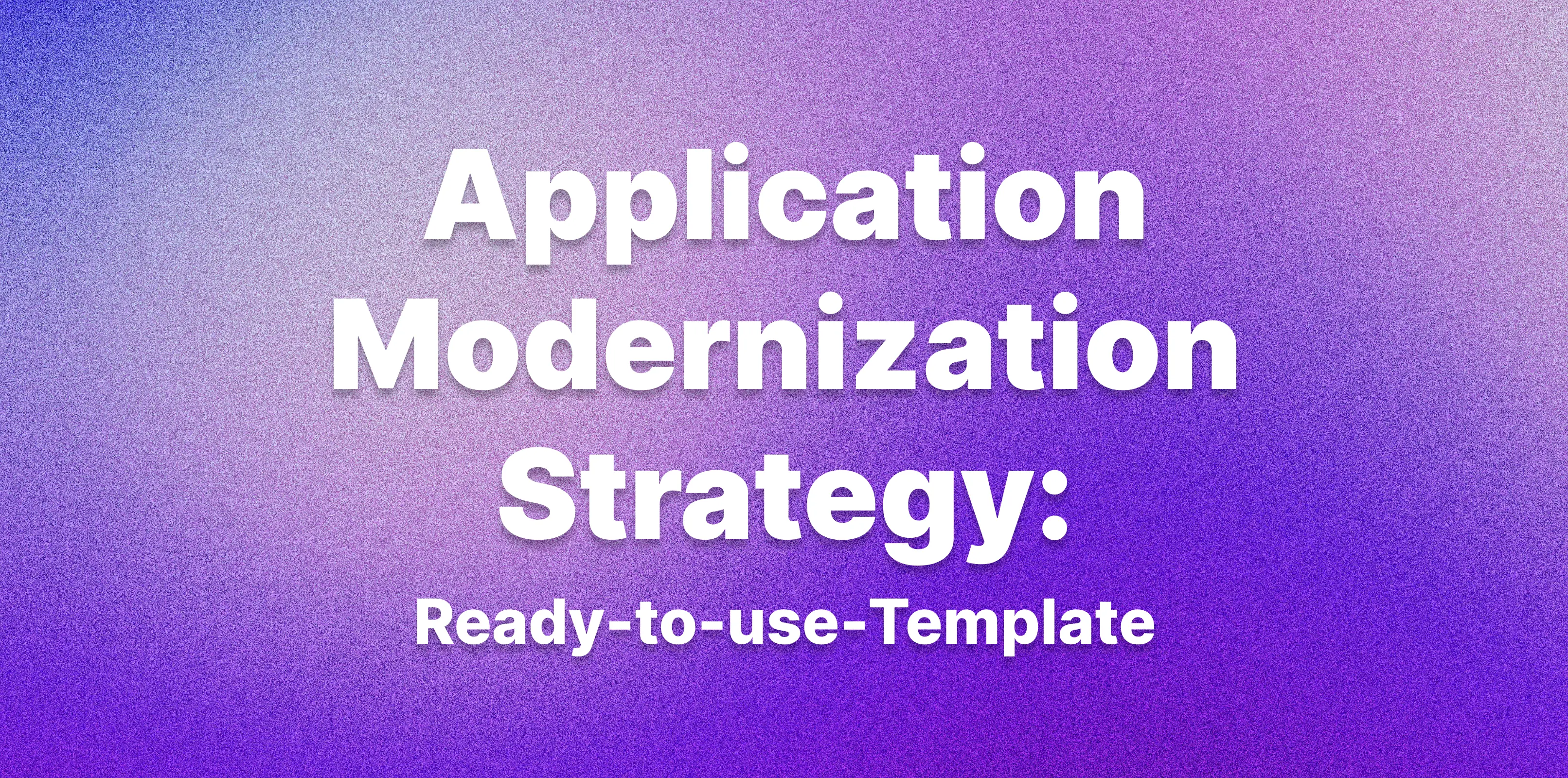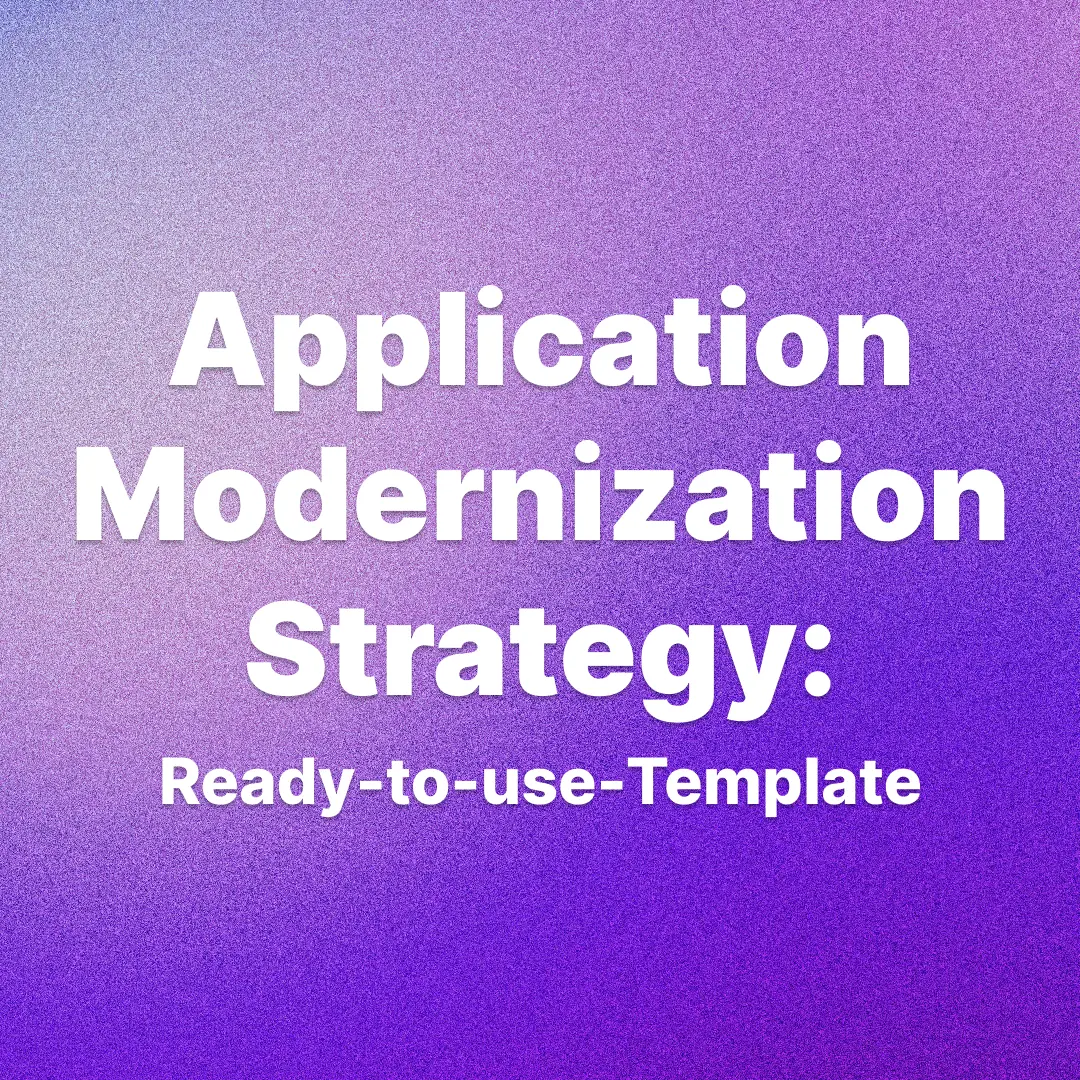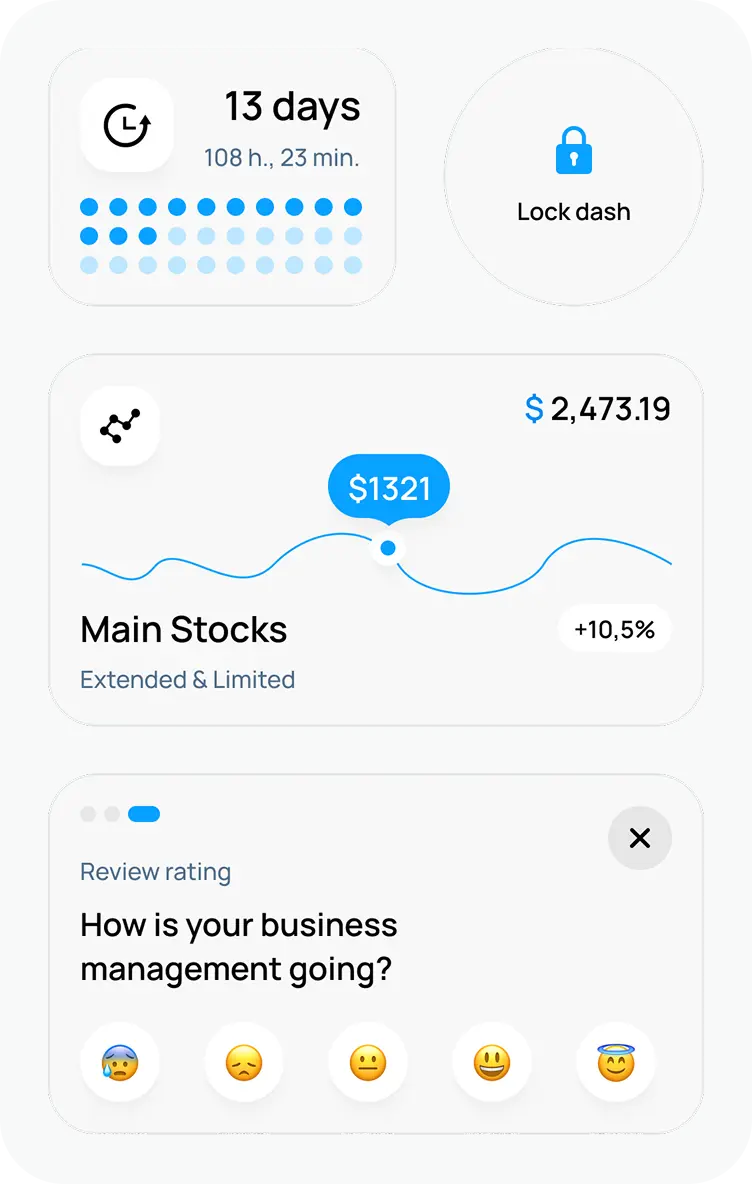Application Modernization Strategy: Ready-to-Use Template
January 14, 2025•3 min read

I hope you enjoy reading this post. If you want us to do your frontend development or design, click here.
Author: Alex Vasylenko | Founder of The Frontend Company


Application modernization is impossible without a good strategy, as this process involves working with people, managing long timelines, and putting in a lot of effort. However, as our experience shows, the results are always worth it.
The best way to start this complex process is to break it into as many elements as possible and develop an application modernization strategy.
This guide will help you with this task through usable steps, making application modernization easier and laying the foundation for a successful project.
Step 1: Make a Technical Assessment
Application modernization strategies start with a detailed assessment of your existing systems. Understanding the current state of your application is the key to a successful strategy.
What to think about:
Performance Issues: Identify areas where the system struggles — slow performance, poor scalability, or frequent crashes.
Legacy Technologies: Highlight outdated frameworks (e.g., AngularJS or older .NET versions) that limit innovation and make it harder to find developers who can work with them.
Cost Analysis: Review the costs of maintaining the existing application, including infrastructure, licensing fees, and human resources. Identify areas where modernization could lead to cost savings. For example, migrating a legacy app from servers to a cloud platform can decrease hardware costs and save thousands annually.
Whether you're working with a small system or a sprawling legacy platform, this assessment will help you understand where your application stands today and lay the groundwork for the rest of your application modernization strategy.
Step 2 - Define the Business Objectives
This step is about understanding how modernization will increase revenue, enhance customer satisfaction, and resolve internal inefficiencies. Defining business objectives helps you prioritize tasks and ensure all stakeholders are aligned with the same vision for success.
What to define:
Business Impact: Pinpoint which parts of the system drive the most revenue or are critical to customer satisfaction.
Pain Points: Involve end users and stakeholders to uncover bottlenecks and operational frustrations.
Identify Stakeholders: List all the key groups, including executives, sales, customer success, and IT. Make sure no one is left out of the conversation.
Motivation for Each Group: Show how modernization benefits each group. For example:
Sales: Easier systems to sell.
Customer Success Team: Better user experience = better client retention.
Executives: Revenue growth and long-term cost savings.
Marketing Teams: Better real-time data and analytics access to create more targeted campaigns and measure ROI.
Developers: Faster coding, easier debugging, and more efficient workflow.
Your mission is to get every department in your company on board and show why modernization is necessary for your business and what benefits it will bring to each specific role. By addressing different motivations, like financial returns for executives or improved workflows for teams, you create a shared vision that drives the project forward.
Without this alignment, the process often stops due to conflicting priorities or a lack of support.
Step 3: Choose Modernization Way
The next step in the legacy application modernization strategies is to analyze your legacy systems and choose a modernization way.
If you have a simple system or app, the best option for you is to rewrite the entire application from scratch and release a new and fast product. This method avoids the complexities of dealing with old systems like AngularJS.
If your system is big, you need to segment it into smaller modules and identify the areas that need immediate attention.
It means:
select the features that users visit the most
modernize them
For example, you can upgrade a dashboard that users see every time they log in.

Transform your UI for peak performance!
🔹
Unlock seamless, high-performance frontend solutions tailored to your business.
🔹
Get an interface that outshines competitors and delights your users.
Step 4: Allocate the Team
At this step, you must decide how to mobilize the team to modernize the application. Traditionally, there are two main approaches:
Building an In-House Team
Partnering with an Outsource Application Modernization Company
Building an In-House Team
Forming an in-house team might seem like a logical choice, but it comes with its challenges:
High Costs: Hiring skilled professionals, training them, and maintaining a dedicated department for modernization is expensive, especially for small companies.
Limited Expertise: Finding experts who can mix legacy systems and modern frameworks can be difficult. Even after hiring, your team might still lack the specific skills needed for large-scale projects.
Long process: In-house teams often need time to ramp up, develop workflows, and prepare for work.
Partnering with an Application Modernization Company
Hiring an external team not only eliminates the challenges of building an in-house team by offering services right from the first contact and access to highly focused experts but also comes with its own advantages:
Focus on Business: By outsourcing the modernization process, your internal team can focus on strategic goals and other priorities without being stretched thin.
Cost Savings: You avoid the expenses of hiring, training, and maintaining a full-time team, making outsourcing a more budget-friendly option.
Fresh View: Outsourcing brings unbiased viewpoints, allowing you to identify issues and opportunities that internal teams might overlook due to familiarity.
📖 Read more: You can find some of the best teams in our article "5 Best Application Modernization Companies," where I've collected agencies with the skills and resources to manage complex projects.
Step 5: Build a Roadmap
An Application Modernization Roadmap is often confused with a strategy in many articles across the web. Let me clarify the key difference: a strategy focuses on the "what" and "why," while a roadmap addresses the "how" and "when" of executing that strategy.
So, when your application modernization strategy is ready, it's time to describe it in a roadmap and make a clear vision of how you will work on modernization and when it will be released.
What to Put in Your Roadmap:
Features and Priorities: List the features or modules identified in your strategy that will be updated first based on user needs, business impact, or technical dependencies.
Roles and Responsibilities: Assign tasks to the right people or teams. Who is responsible for each feature? Make sure everyone is clear and accountable at every stage of the project.
Time and Budget: Include a detailed timeline with estimates for each phase. Divide the budget for each department, like development, testing, and potential outsourcing. Be transparent on how much you will spend for each milestone.
Future Look: Visualize how the modernized system will look on release. List what technologies, tools, and platforms you will use and how much money you will spend on them.
Implementation: Describe how and when you will release new features. Include release dates, testing phases, and deployment plans to minimize time delays and maximize value.
Creating an application modernization roadmap is one more big step after all the hard work you've already done — but don't let this challenge stop you.
If you want to build an effective roadmap, check out our guide, "Application Modernization Roadmap: A Step-by-Step Guide for Creation," where we've broken down the roadmap creation process into straightforward and actionable steps. You can even print it to simplify what might feel overwhelming and set a successful foundation for a modernization project.
Conclusion
Developing and presenting an application modernization strategy is a complex and challenging task. Each step requires enthusiasm, motivation, time, and a strong desire to grow your company and product.
We recommend keeping this article handy to ensure you don't miss any crucial steps in your application modernization journey and choose reliable application modernization services.

Unlock the full potential of your product

Boost customer retention & satisfaction

Become more competitive on the market

Move to the latest technologies stacks

Improve usability & visual appeal
FAQ

Alex Vasylenko is the founder of The Frontend Company, DBC and several other successful startups. A dynamic tech entrepreneur, he began his career as a frontend developer at Deloitte and Scandinavia's largest banking company. In 2023, Alex was honored as one of 'Top 10 Emerging Entrepreneurs' by USA Today.
RATE
Rate this article please
This will help us provide more useful information.
458 ratings, average 4.9 out of 5
